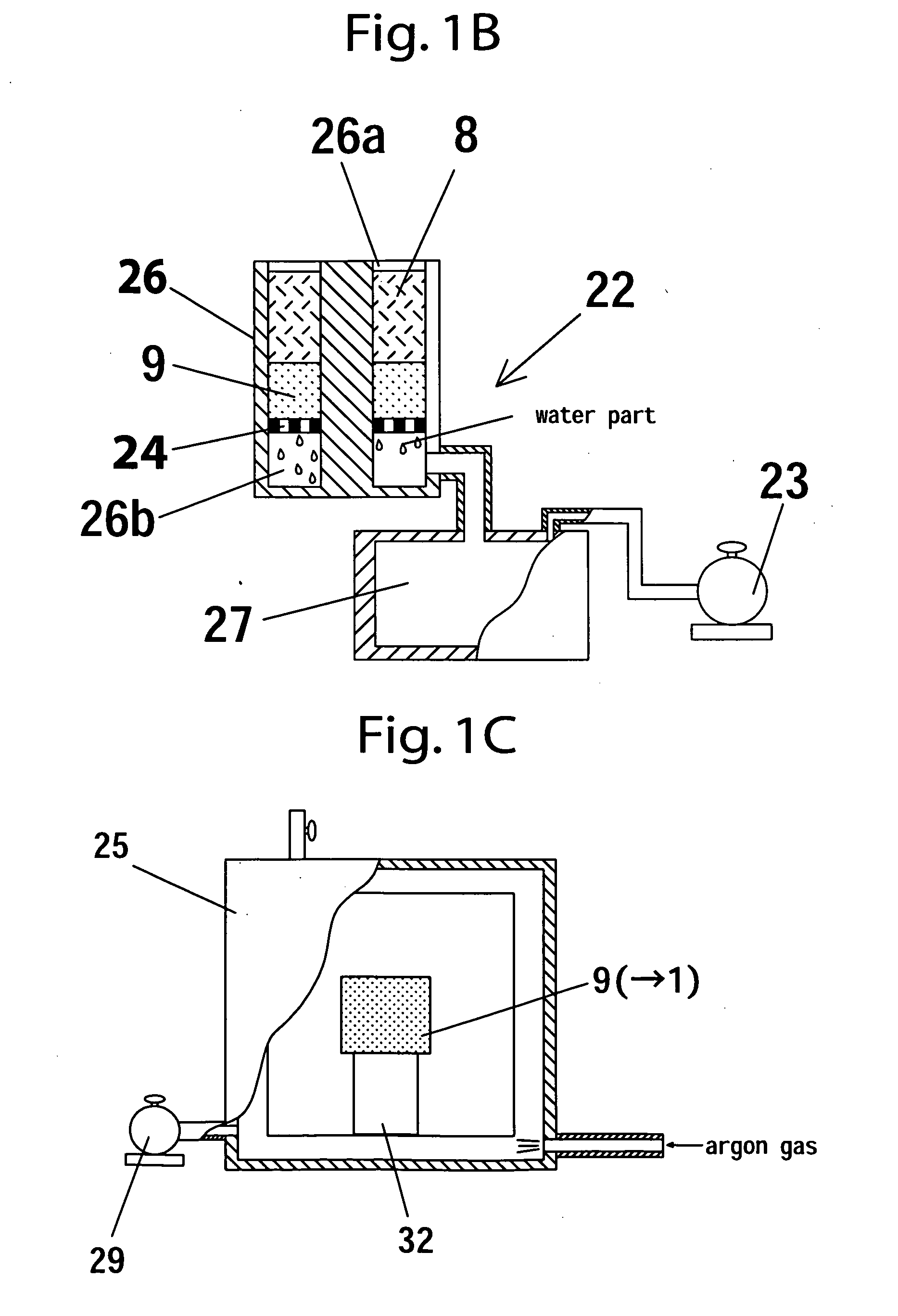Preform for composite material and process for producing the same
a technology of composite materials and preforms, which is applied in the direction of thin material processing, ceramic layered products, transportation and packaging, etc., can solve the problems of deformation of preforms for composite materials, fractures or cracks in molded metal composite materials, and metal composite materials that do not sufficiently exhibit mechanical characteristics, etc., to achieve superior air permeability, high strength, and the effect of high strength
- Summary
- Abstract
- Description
- Claims
- Application Information
AI Technical Summary
Benefits of technology
Problems solved by technology
Method used
Image
Examples
example 1
[0062]In the above-described mixing step (FIG. 1A), the following materials (i) to (v) are added to water in a vessel 21.
(i) Alumina short fibers 2 (average fiber diameter: 5 μm, average bulk ratio: 20 cc / 5 gf)
(ii) Aluminum borate particles 3 (9Al2O3.2B2O3, average particle diameter: 30 μm)
(iii) Calcium carbonate particles 4 (CaCO3, average particle diameter: 0.3 μm)
(iv) Graphite particles 5 (average particle diameter: 20 μm)
(v) Silica sol 7 (SiO2, aqueous colloidal solution having a concentration of about 40%)
[0063]The average fiber diameter, average bulk ratio and average particle diameter are mean values of the fiber diameter, bulk ratio and particle diameter, respectively, and there are variations. The alumina short fibers 2 are ceramic fibers according to the present invention. The aluminum borate particles 3 and graphite particles 5 are ceramic particles according to the present invention. These ceramic fibers and ceramic particles are so called reinforcing materials.
[0064]Usi...
example 2
[0078]In Example 2, the following materials (i) to (v) are added to water in a vessel 21 to perform the mixing step (FIG. 1A) of a preform production process.
(i) Alumina short fibers 2 (average fiber diameter: 5 m, average bulk ratio: 20 cc / 5 gf)
(ii) Aluminum borate particles 3 (9Al2O3.2B2O3, average particle diameter: 3 m)
(iii) Calcium carbonate particles 4 (CaCO3, average particle diameter: 0.3 μm)
(iv) Graphite particles 5 (average particle diameter: 20 μm)
(v) Silica sol 7 (SiO2, aqueous colloidal solution having a concentration of about 40%)
[0079]The materials are the same as those in Example 1 except that the aluminum borate particles have an average particle diameter of 3 μm. The mixing amount of the aluminum borate particles is the same as that of the aluminum borate particles 3 in Example 1. In the following description, steps and constitution similar to those in Example 1 are omitted and similar reference numerals are affixed to the same components.
[0080]An aqueous mixture l...
PUM
| Property | Measurement | Unit |
|---|---|---|
| particle size | aaaaa | aaaaa |
| particle size | aaaaa | aaaaa |
| particle size | aaaaa | aaaaa |
Abstract
Description
Claims
Application Information
 Login to View More
Login to View More - R&D
- Intellectual Property
- Life Sciences
- Materials
- Tech Scout
- Unparalleled Data Quality
- Higher Quality Content
- 60% Fewer Hallucinations
Browse by: Latest US Patents, China's latest patents, Technical Efficacy Thesaurus, Application Domain, Technology Topic, Popular Technical Reports.
© 2025 PatSnap. All rights reserved.Legal|Privacy policy|Modern Slavery Act Transparency Statement|Sitemap|About US| Contact US: help@patsnap.com



